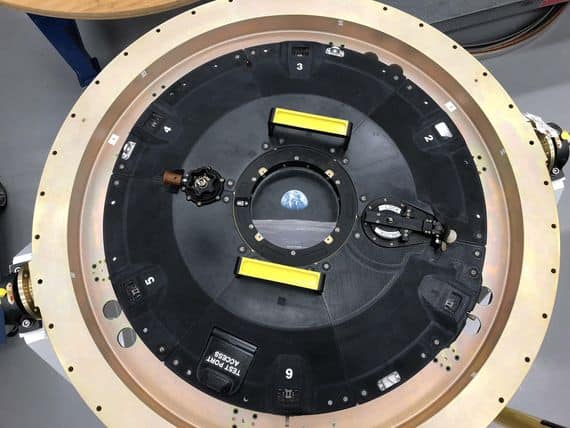
A partnership between Stratasys, Lockheed Martin and PADT is bringing 3D printing to a US-led manned spaceflight for the first time.
3D printing is headed for deep space.
Stratasys, Phoenix Analysis & Design Technologies (PADT) and Lockheed Martin said Tuesday that they’re teaming up to manufacture and deploy 3D-printed parts for NASA’s Orion spacecraft, which is set to embark on both manned and unmanned missions within the next few years.
Orion’s unmanned test flight, called Exploration Mission-1 (EM-1), is currently slated for takeoff in December 2019. That mission will pave the way for EM-2, a spaceflight that’ll have astronauts on board when it launches to the vicinity of the moon in the early 2020s.
EM-2 will use more than 100 3D-printed parts, making it the first manned US-led spacecraft to use parts made through the process. The largest 3D-printed part is a cover on the spacecraft’s docking hatch, which will protect it from the harsh external environment. Other parts include brackets and smaller elements.
“There are no higher requirements out there than what goes into a vehicle that’s keeping astronauts safe in space,” said Scott Sevcik, vice president of manufacturing solutions at Stratasys. 3D-printing parts for EM-2 is “a great demonstration of just how far the technology has come,” he added.
EM-2 won’t be 3D printing’s first journey into space. The International Space Station installed a 3D printer in 2014 to test the feasibility of astronauts manufacturing their own components and tools. NASA also tested 3D-printed rocket components in 2013. Orion’s use of 3D printing is unique because the spacecraft will have astronauts on board when it is sent into deep space.
Tough build
Of course, there are special considerations that go into manufacturing 3D-printed parts headed for the harsh environments of space. The material used to create these parts must be able to withstand extreme heat without melting, and shouldn’t release gas in outer space. If it does, it could damage other parts of the spacecraft.
The material also needs to withstand exposure to certain chemicals without cracking or breaking, and it needs to resist building up charge, which could produce a static shock that damages electronics.
The companies therefore opted to use a specialized 3D-printed material from Stratasys called Antero 800NA, a thermoplastic with high strength, as well as heat and chemical resistance. The material also doesn’t build up charge and can withstand high mechanical loads.
Why use 3D printing?
Why exactly would an aerospace company opt for 3D-printed parts over traditional manufacturing?
For starters, 3D printing can be a more efficient production option, Sevcik says. It’s more cost effective to directly print a small number of parts than to spend a lot of money on an expensive injection molding tool, which only pays for itself if you’re manufacturing high volumes of a part.
Additionally, 3D printing allows for more design freedom, Sevcik says. Unlike most traditional manufacturing processes, which start with a form that’s then whittled into a shape, 3D printing allows you to build up a part, meaning you have more control over the shape and how materials are utilized. It also becomes easier to develop lighter parts.
“We have freedom to create the part for the application, as opposed to the part that the traditional technology forces us into,” Sevcik said.
Orion’s manned mission will take 3D printing where it’s never gone before. Going forward, it could help push the technology and its applications even further.

